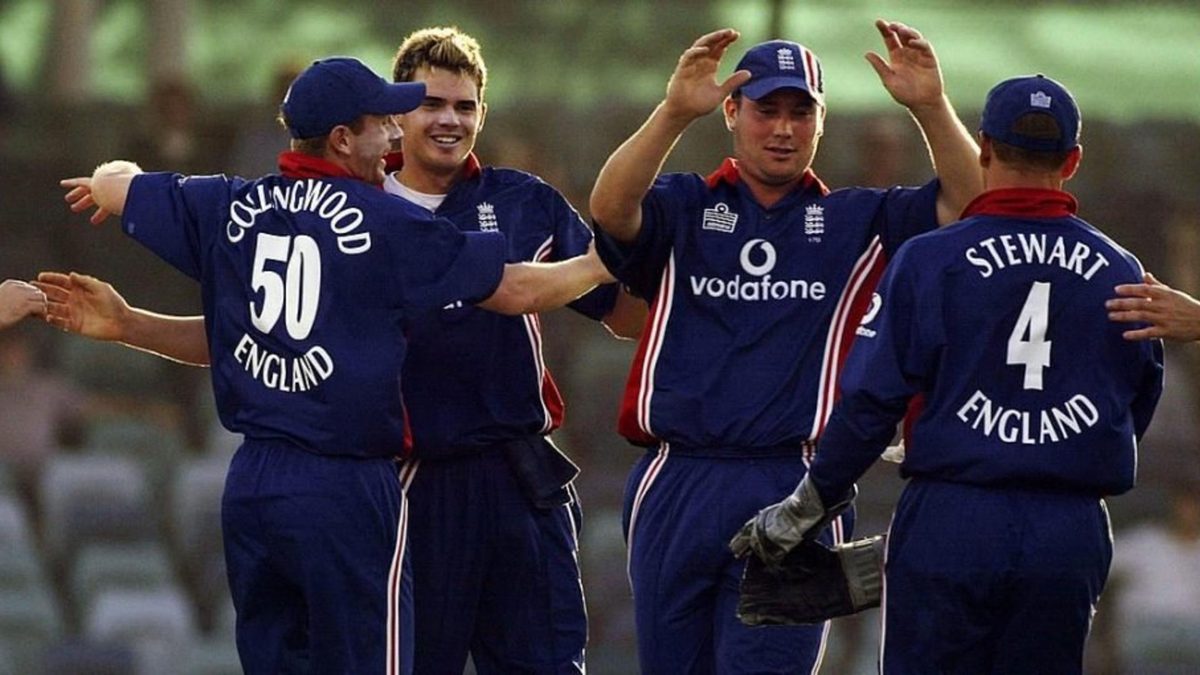
James Anderson has been around for a while. It’s now been over 18 years since Anderson made his international debut off the back of a breakthrough season for Lancashire at the age of 20.
Making his maiden international appearance in an ODI that took place in between the third and fourth Tests of the 2002/03 Ashes, Anderson was a near instant hit, nailing down a spot in England’s ODI side ahead of the 2003 World Cup. That said, his debut didn’t go all too well.
Opening the bowling with James Kirtley at the MCG, Anderson was entrusted with just six overs by skipper Nasser Hussain as the young quick conceded 46 runs, although he pick up the wicket of Adam Gilchrist with the Australian opener well past 100.
Despite that iffy start, England persisted with Anderson. Two days later, Anderson took 2-48 in a win over Sri Lanka at the Gabba, a haul that included the dismissal of Sanath Jayasuriya with the new ball; Anderson quickly established himself as an important member of the side.
Anderson’s standout performance in the tri-series came towards the end of the protracted group stage, in which every side played eight games before the best-of-three set of finals. At Adelaide just a month after Anderson’s ODI debut, Hussain elected to bat first against an Australia side featuring a young debutant by the name of Michael Clarke.
Not for the first time that tour, England were made to rue the decision made by Hussain at the toss. England, Paul Collingwood aside, offered little resistance with the bat, eventually crawling their way to 152 before being bowled out in the 49th over; Nathan Bracken was the pick of the Australia bowlers, picking up figures of 3-21.
It would be an uphill battle for England to even put up a fight. But a new-ball wicket each for Anderson and Andy Caddick left Australia 5-2, prompting the third-wicket pair of Damien Martyn and Michael Bevan to undertake a rebuilding job. Australia eventually got over the line, winning by four wickets with 15 balls left spare but not before Anderson finished with extraordinary figures of 10-6-12-1; only two men’s ODI spells have ever contained more maidens than Anderson’s six that day.
That run chase was also notable for Australia’s ‘innovative’ batting order. Presumably searching for quick runs after Martyn and Bevan’s 91-run stand came at fewer than three runs per over, Australia promoted Brett Lee up to No. 5 ahead of Clarke, Andrew Symonds and Shane Watson, who eventually came in at eight.
Anderson’s next spell against Australia wasn’t quite as frugal. Four days later in the first game of the finals, England were yet again skittled out for a meagre total, this time for just 117. Australia’s approach in the run chase was entirely different this time round, hurtling towards the target without losing a wicket in just 12.2 overs. Anderson’s four overs that day cost him 35 runs, but by that point in the tour he’d already given plenty of indicators of his extraordinary potential.








